Heather beetle
History in New Zealand
Heather was planted in Tongariro National Park (TNP) in 1912 to provide food and cover for introduced grouse. While grouse failed to establish, heather thrived and has now invaded more than 60 0000 ha of the Central Plateau, North Island.
Heather beetles are native to north-west Europe where large scale outbreaks can devastate heather. They were first imported from the UK by Manaaki Whenua - Landcare Research in 1992 and were released into TNP in 1996 after being cleared of a protozoan parasite. Beetle populations were initially slow to establish, and genetic bottlenecking, poor climate-matching and low foliar nitrogen levels appeared to be contributing factors. However, recent beetle spread has been spectacular at high altitude sites on the Central Plateau resulting in a total of 40,000 ha of heather being damaged by 2021.
How would I find/recognise them and what is their lifecycle?
Adult beetles are visible during spring and autumn when they feed up on heather foliage. They range in colour from light brown to almost black and are about 6 mm long. Because of their cryptic behaviour and tendency to drop to the ground when disturbed, adults can be hard to see unless present in large numbers. Adults spend winter in moss or litter at the base of plants until rising temperatures in spring stimulate them to emerge, feed, and produce eggs. The beetles can fly at least several kilometres after this spring emergence, but they probably only do this when surrounding heather is in poor condition.
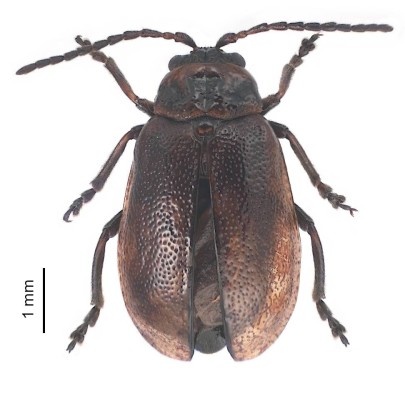
Image: adult heather beetle.
Females lay on average 175 pale yellow pinhead-sized eggs which turn dark orange and then brown just before hatching. This process takes about 1–2 weeks. The greyish-white larvae with black heads are difficult to see unless extremely common. They feed on young shoots and leaves during the summer. The larvae feed and develop through three stages and over 4–5 weeks grow to about 12 mm long.
Image: heather beetle larvae.
Once fully grown, larvae pupate inside earthen cells. You are unlikely to see these pupae as they are usually formed just below the soil surface or in the litter layer. After about 3–4 weeks new adults emerge. By now, it is usually late summer, and the new adults spend autumn feeding until cooler temperatures induce hibernation. There is only one generation per year.
There are no other insects on heather that you are likely to confuse with the heather beetle.
How do they damage heather?
Both the larvae and the adults feed on foliage. When present in large numbers, they can severely defoliate whole plants, causing them to turn reddish-brown and die.
Image: large grey patches of damaged heather.
Will they attack other plants?
No, it is extremely unlikely that the beetles will attack anything other than Scottish heather (Calluna vulgaris). Spanish heath (Erica lusitanica) and other Erica species are not considered to be suitable hosts — heather beetles may be found on them but are unlikely to be damaging.
How effective are they?
Population establishment and growth has improved significantly following a slow start. From 1996-2018 5,000 ha of heather was damaged. Since 2018 spectacular beetle outbreaks have damaged a further 35,000 ha! Heather beetles have reduced heather cover by up to 99% in these areas and research has shown that native plants are recovering, in contrast to outcomes from previously adopted herbicide control methods which damaged native plants as well.
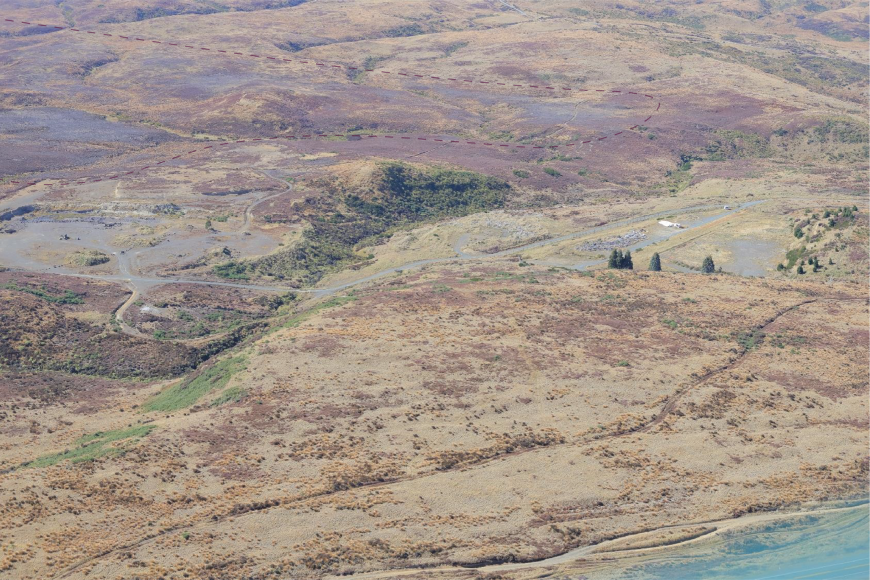
Image: aerial view of heather beetle invasion front (red dotted line). Photo taken over the Central Plateau, North Island, 2021.
How can I get the most out of this agent?
Although the adults can fly at least several kilometres after spring emergence, they probably need some help to establish in other regions throughout New Zealand where heather is becoming a problem weed.
How do I select a release site?
Read Guidelines for selecting release sites for biocontrol agents.
How do I collect them for release at other sites?
Collect adults with a sweep net off heather foliage on warm calm days during early spring or mid-autumn. It is easier to collect from outbreak populations and aim to shift about 500 adults if possible.
How do I manage the release sites?
Avoid any activities that will interfere with the beetles, such as herbicide application. If you need to undertake control measures, then avoid the release site.
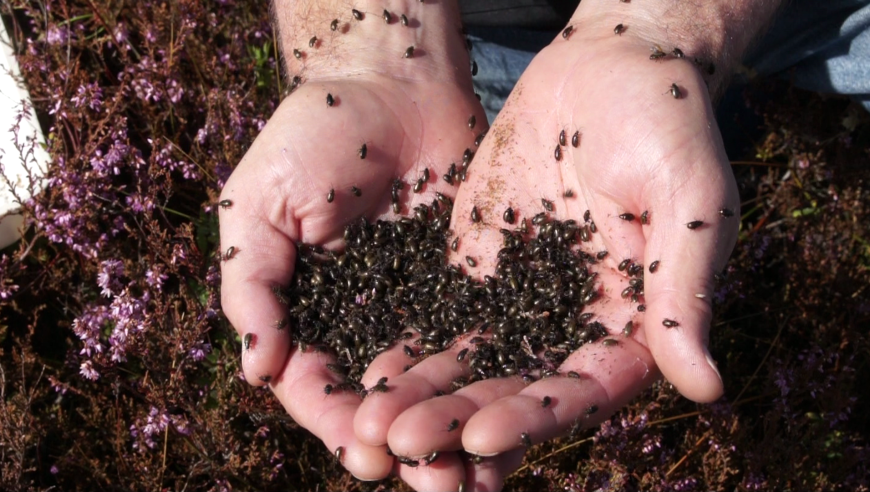
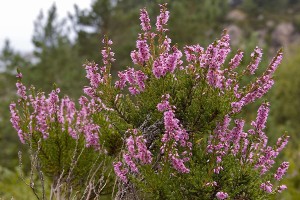
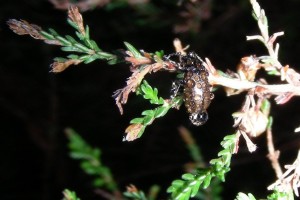
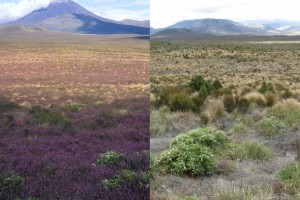
![Heather beetle ([Lochmaea suturalis]) a biocontrol agent introduced in 1996 is shown to only attack its target plant heather ([Calluna vulgaris]).](/assets/Publications/Putaiao/Putaiao-Issue-4/beetles_close__FillMaxWzMwMCwyMDBd.jpg)